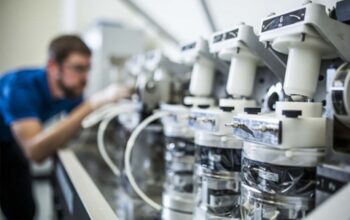Imagine a world where machines learn on the job, buildings are made from old concrete, and batteries never explode—engineers are delivering just that, rewriting the rules of modern life one project at a time.
It’s easy to think engineering is all about complicated equations and invisible inventions. But these days, the real excitement is in actual, everyday solutions that touch people’s lives. Here’s a behind-the-scenes look at the latest trends shaking up the industry, told in simple, relatable terms and packed with real human stories.
Plug-and-Play AI: The Quiet Revolution on the Factory Floor AI in manufacturing is no longer futuristic—it’s happening right now, and it’s not just about flashy robots. The big trend for 2025 is the ‘density of AI,’ a term meaning more machines and devices are getting built-in smarts that let them adjust on the fly, like a chef tweaking a recipe while cooking, but for factories. According to experts, adding AI isn’t so much about ripping out old machines as it is plugging in new smart sensors and letting them talk to each other. Imagine a factory where, if a conveyor gets too hot, the system instantly slows it down and calls for maintenance before anything breaks. That’s what’s happening today, and it’s not just for the biggest companies; even small shops are starting to see benefits.
Turning Waste into Walls: The Cement Recycling Breakthrough Crumbled concrete from old buildings used to just be tossed away. But engineers at the University of São Paulo and Princeton have figured out how to make new cement from old rubble, slashing emissions and giving new life to demolitions waste. It’s like turning yesterday’s breakfast leftovers into next week’s pizza crust. The result is a greener, more affordable building material that doesn’t skimp on strength—a win for both builders and the planet. Real-world trials are already underway, and the industry is taking notice.
Batteries That Play It Safe: Safer, Longer-Lasting Energy Storage Next-generation electric vehicles need batteries that can go the distance—literally. But sometimes, batteries can release harmful gases or even explode under stress. Engineers at UNIST have cracked part of the puzzle by redesigning the inside of batteries to prevent dangerous oxygen leaks. Their new materials are paving the way for batteries that can last up to 1,000 km on a single charge, without the dangers of explosions. For electric car drivers and makers, this means more confidence and less worry on the road.
Tiny Tech for a Healthier World: Nano-Engineered Coolers Ever wished your electronics or air conditioner ran cooler and used less energy? Nano-engineered thermoelectric materials are making this a reality. Researchers have unveiled a new solid-state cooling technology that doubles the efficiency of today’s systems. These tiny, thin layers can handle heat without loud, bulky compressors, making them perfect for everything from laptops to home cooling systems. It’s like swapping a clunky old fan for something as thin, quiet, and powerful as a smartphone. Practical applications are already popping up, promising quieter, more efficient living.
Supercharged Careers: The Engineering and IT Boom Engineering and IT professionals are in demand like never before, with the UK’s IT workforce growing twice as fast as other professions since 2011. Engineering, while growing a bit slower, is still outpacing most other trades. Companies are always looking for people who can build, fix, or improve the tech we all rely on every day. The rise of smart factories, greener materials, and safer energy is fueling exciting new jobs—making engineering a field where you can really make a difference.
These stories show that engineering isn’t just about gizmos and gadgets—it’s about real people fixing real problems, making cities cleaner, jobs smarter, and lives better. That’s the kind of world we’re building right now.
References:
- https://www.enr.com/publications/11/editions/1564
- https://techxplore.com/engineering-news/
- https://entechonline.com/category/news/science-technology-news-2025/technology-news-may-2025/
- https://engineeringindustrynews.com/ai-manufacturing-trends-2025/
- https://www.eurekalert.org/specialtopic/tech/_
- https://www.sciencedaily.com/news/matter_energy/engineering_and_construction/
- https://www.gov.uk/government/publications/professionals-in-it-and-engineering-review/professionals-in-it-and-engineering-accessible
- https://www.imeche.org/news



